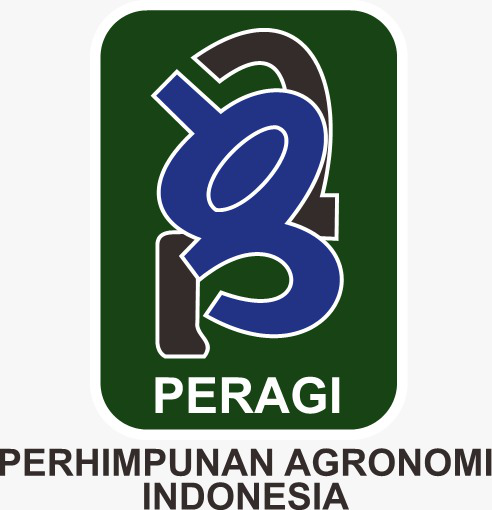Application Lemongrass Extract (Cymbopogon citratus Dc) Against Mortality Death of Termites (Macrotermes gilvus Hagen) With Several Application Techniques
Abstract
Lemongrass is a plant that contains citronellal, geraniol, and other compounds which are known to increase termite mortality. This research aims to determine the most effective concentration of lemongrass extract on termite mortality using several application techniques. The method used in this research was a Factorial Completely Randomized Design (CRD), with 3 replications where: Treatment factor I used lemongrass extract application. This treatment consists of 10 combinations and in 1 treatment unit there are 30 termites ( Macrotermes gilvus Hagen), so the total is 900 termites. The parameters observed were the percentage of termite mortality (%) and termite activity after application with 3 categories: 1=Alive actively moving; 2=Alive not actively moving; 3=Dead, so the data was analyzed using the Variety Print Analysis Method and Kruskal Wallis Analysis. Significant data analysis results will be followed by the Duncan Mean Range Test (DMRT) at ɑ=5%. The results of the study showed that the application of lemongrass extract (Cymbopogon citrates DC) 100g/l of water was significant in reducing termite (Macrotermes gilvus Hagen) mortality by up to 95% on day 7. The effectiveness of the feeding technique was not significantly different from the spraying technique in reducing actual mortality to 85.44 %. The interaction between the application of lemongrass extract (Cymbopogon citratus DC) 100g/liter of water and the application technique did not significantly reduce the mortality of termites ( Macrotermes gilvus Hagen)Downloads
References
Anugrah, SF 2022. Effectiveness Test A number of Vegetable Pesticides Against Termite Pests ( Coptotermes curvignathus H.). Journal Scientific Student Agriculture [JIMTANI]. Vol. 2 (2). Matter. 1-10. https://jurnalmahasiswa.umsu.ac.id/index.php/jimtani/article/view/1384/1421
French, JRJ 1994. Physical Barriers and Bait Toxicants: The Romeo and Juliet of Future Termite Control. Paper Prepared for The 25th Annual Meeting International Research Group on Wood Preservation.
Gomez, KA and AA. Gomez 2007. Statistical Procedures for Agricultural Research Second Edition UI Press. Jakarta.
Kardinan, A. 2000. Vegetable Pesticides, Ingredients and Applications. Jakarta: Self-Help Spreader.
Nandika, D., Y. Rismayadi, and F. Diba . 2003. Termite Biology and Control . Muhammadiyah University Press . Surakarta
Pahan, Iyung. 2010. Agribusiness and upstream to downstream management, Jakarta: self-help spreaders
Prasetiyo, K. W, S. Yusuf. 2005. Prevent and eradicate termites in an environmentally and chemically friendly manner. Depok: PT Agro Media Pustaka.
Rahuttami , R. 2017. Effectiveness Test Citronella Leaf Extract ( Cymbopogon Nardus L) Against Termite Mortality . Journal Agrofortech . Vol. IX (3). Matter. 275-280. https://journal.poltekcwe.ac.id/
Subekti, N,. Durayadi, D,. Nandika, D,. Surjokusumo, S and Anwar, S,. 2008. Distribution and Morphological Characteristics of Subterranean Termites (Macrotermes gilvus Hagen) in Natural Forest Habitats. Journal of Forest Products Science and Technology, vol 1 pp 27-33.
Wijayakusuma, HMH 2000. Indonesian Medicinal Plants: Spices, Rhizomes, and Tubers. Jakarta: Popular Millennia.
Copyright (c) 2024 Abu Yazid

This work is licensed under a Creative Commons Attribution 4.0 International License.
Authors who publish with Jurnal Agronomi Tanaman Tropika (JUATIKA) agree to the following terms:
Authors retain copyright and grant the Jurnal Agronomi Tanaman Tropika (JUATIKA) right of first publication with the work simultaneously licensed under a Creative Commons Attribution License (CC BY 4.0) that allows others to share (copy and redistribute the material in any medium or format) and adapt (remix, transform, and build upon the material for any purpose, even commercially) with an acknowledgment of the work's authorship and initial publication in Jurnal Agronomi Tanaman Tropika (JUATIKA).
Authors are able to enter into separate, additional contractual arrangements for the non-exclusive distribution of the journal's published version of the work (e.g., post it to an institutional repository or publish it in a book), with an acknowledgment of its initial publication in Jurnal Agronomi Tanaman Tropika (JUATIKA). Authors are permitted and encouraged to post their work online (e.g., in institutional repositories or on their website) prior to and during the submission process, as it can lead to productive exchanges, as well as earlier and greater citation of published work.







 More Information
More Information



